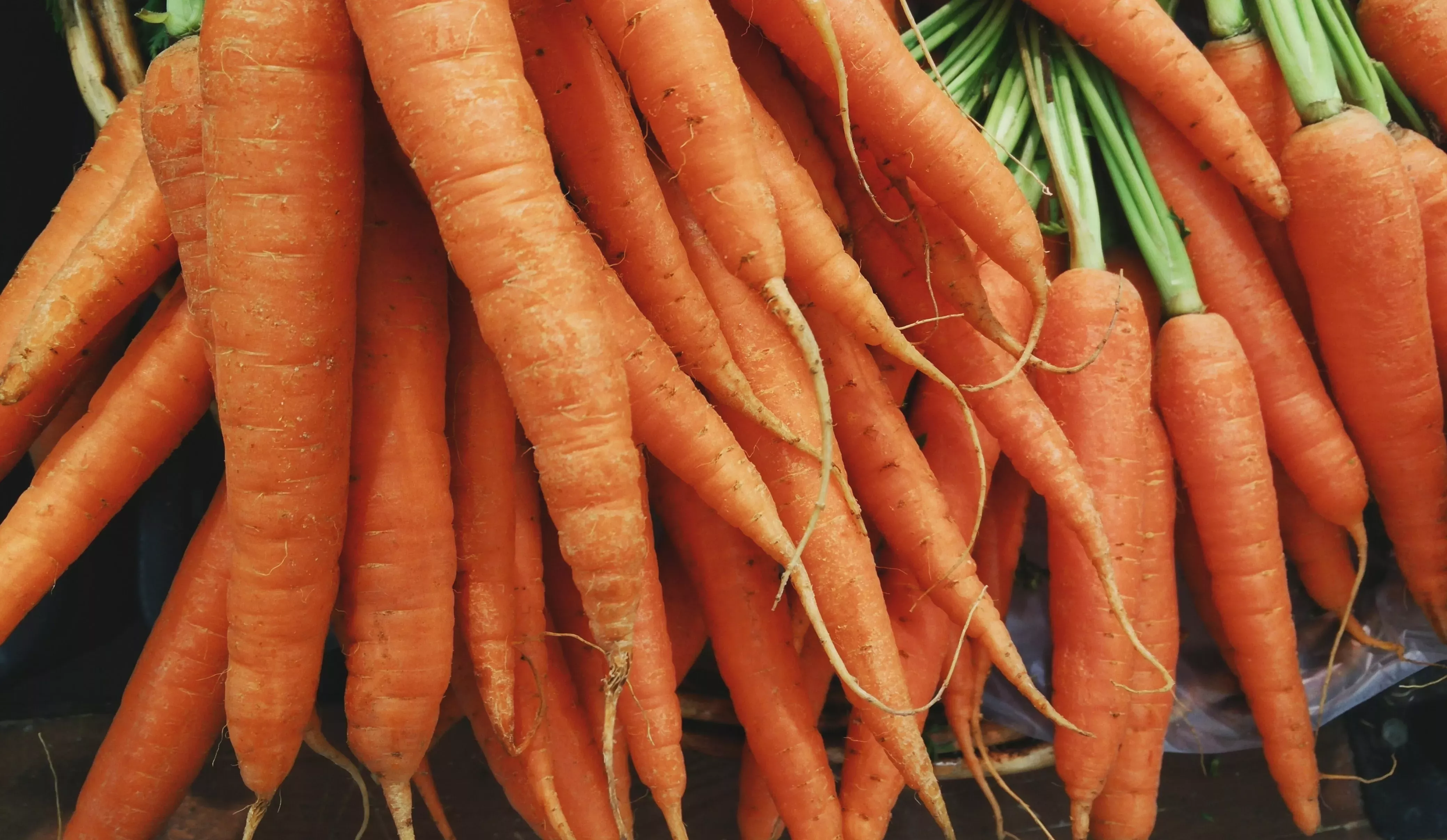27 April 2021
How climate change is affecting carrots
Carrots are in crisis, but wild carrots may hold the clue to protecting our precious carrots for the future.

A classic roast dinner side dish and salad staple, carrots are one of the UK's favourite root vegetables. The UK produces an incredible 700,000 tonnes of carrots a year.
But many crops are struggling with changes in climate and more unpredictable weather, and our orange favourites are one of them.
Extreme weather can decimate carrot crops, and they don't grow well when the summers are hot and dry.
In our Kitchen Garden, we are experimenting with wild carrots which could hold the key to carrot resilience in the face of climate change. Our Head Kitchen Gardener Hélèna Dove explains all.
Why is climate change affecting carrots?
Carrot crops are struggling in the UK, and we can see that in our Kitchen Garden crop too.
Warm temperatures are causing the carrots to bolt more regularly. This is usually caused by the stress of rapid increases in temperature.
Bolting is a survival mechanism of a plant.
It is when plants grow rapidly from being mostly leaf-based to being mostly flowers and seed. This is a problem because plants usually become inedible when they bolt.
The germination of our carrots has also been more inconsistent. Carrot seeds like to be kept moist, but sudden heat and strong winds means the soil often dries out much more quickly.

Why wild carrots might be the answer
What can we do to preserve our carrots and ensure we get successful crops?
Wild relatives of carrot could hold the answers we need. Wild relatives are different to cultivated crops, which are usually grown large-scale on farms.
Cultivated crops are bred to ensure certain traits, such as size or colour, remain consistent. This is good for supermarkets, who like to sell vegetables that are all the same shape and size.
Cultivated crops are not very resilient to weather or temperature changes whereas wild relatives of common plants are much hardier. This is because they have adapted and thrived to a constantly changing climate.


Wild carrots in the Kitchen Garden
This year in the Kitchen Garden, we will be experimenting with wild varieties of carrot.
The wild carrot seed has been collected as part of the Crop Wild Relatives Project organised by the Global Diversity Crop Trust, which Kew has been a part of.
Our partners around the world have been involved in collecting and protecting the wild relatives of the world's most important food crops. We've also sent 83 wild carrot seed collections to the United States Agricultural Department to support their breeding research.
In the future, the genetic traits from these wild seeds could be bred into our food, in order to make food crops more resilient to extreme weather.
In the Kitchen Garden, we will be sowing wild carrots alongside their cultivated cousins that we regularly grow.
We will continue to grow other carrot seeds collected from several countries, including the UK, Portugal, and Kazakhstan.
By growing the wild and domesticated carrots side-by-side, it will be interesting to note the similarities and differences in how they are affected by the weather.
Did you know? We collected more wild carrot seeds than any other genus in the Crop Wild Relatives project - over 2.1 million seeds.


How do you grow carrots?
We sow our carrots directly in the ground, as any damage to the tip of the root when transplanting causes the carrot to fork, giving you a stumpy carrot.
We clear away large debris from the mulch to make it easier for the carrots to germinate. We surround the area with micromesh to stop carrot root fly.
Once sown into a shallow drill, the area is kept watered until the first leaves appear and germination is successful.
We thin out the carrot plants over the next couple of months, to allow them room to mature properly.
How do we categorise carrots?
Carrots have two main categories which relates to their origins.
Eastern carrots are those domesticated in the Middle East and are generally purple in colour.
Western carrots were originally bred by the Dutch and usually have orange flesh.
These can then be further categorised by shape, for which there are many subdivisions, but the main four are:
- Chantenay. These are short rooted carrots with a rounded tip which produce a lot of foliage.
- Danvers. These carrots have a longer root than chantenay types which grows into a conical shape with a pointed tip.
- Imperator. Some of the biggest and sweetest carrots, they have a long slim body with a pointed tip.
- Nantes. These smaller types are great for early sowing, they have a cylindrical body and a blunt tip.
My favourite carrot cultivars
Some of the cultivars we will be growing along side our Crop Wild Relative Carrots include:
- Paris Market. Small, round carrots bred in France in the 1800’s and are perfect for forcing (which is when they are grown inside to start with, earlier than if they were grown outdoors).
- Pastenaga Negra, Spanish Black or Morada are all names given to heritage purple carrots with a long body. More purple than black, they are some of the oldest cultivated carrots, having been around grown for at least 400 years. Their dark colour is produced by antioxidant compounds called anthocyanins.
- Long Red Surrey. One of the few heritage carrots bred in the UK, it was introduced in 1834. It has a slightly yellow core and will grow well in the autumn, storing over winter.
- Ochsenherz or Oxheart carrot, also known as Blunt-rooted Guerande. This is a wide and short carrot hailing from France and brought to market in 1884. This type will grow well in heavier soils, where some other carrots may struggle.
Head down to the Kitchen Garden to see our wild carrot experiments, as well as other varieties of fruit and veg.
.jpg.webp?itok=j3o5gC5j)

.png.webp?itok=fy47fI7-)
